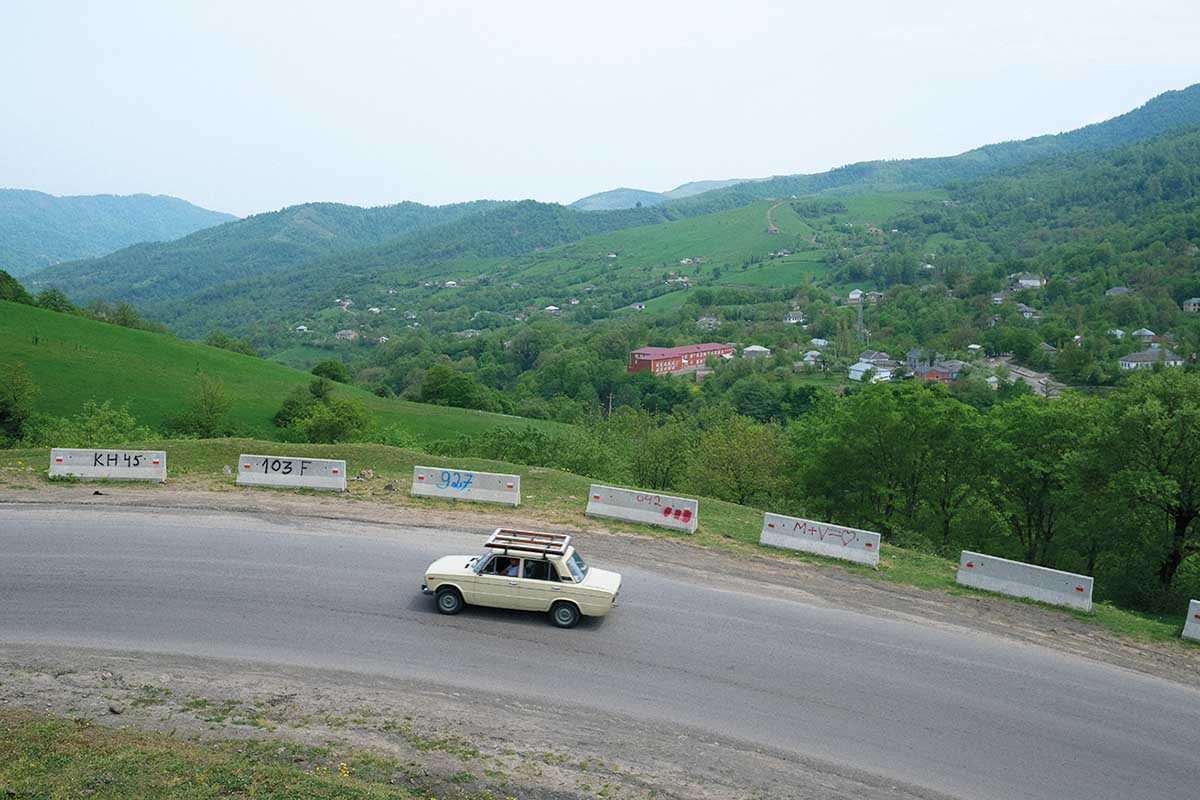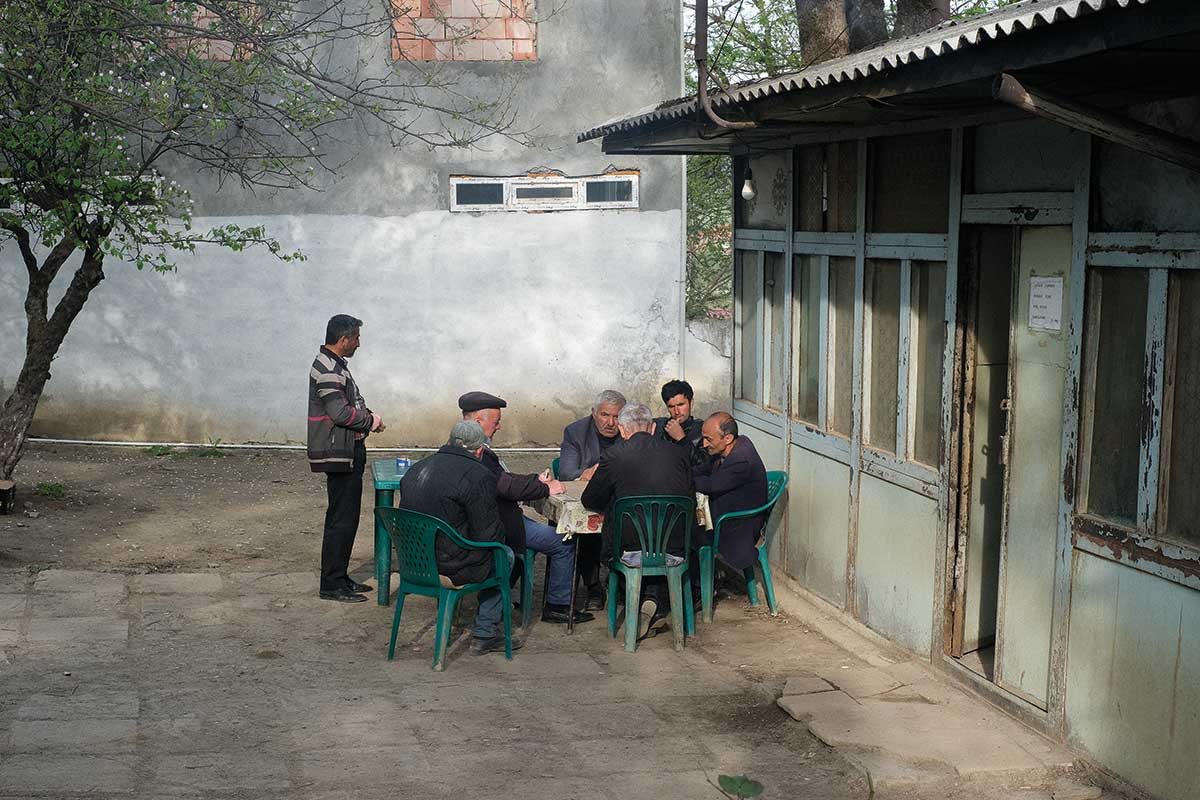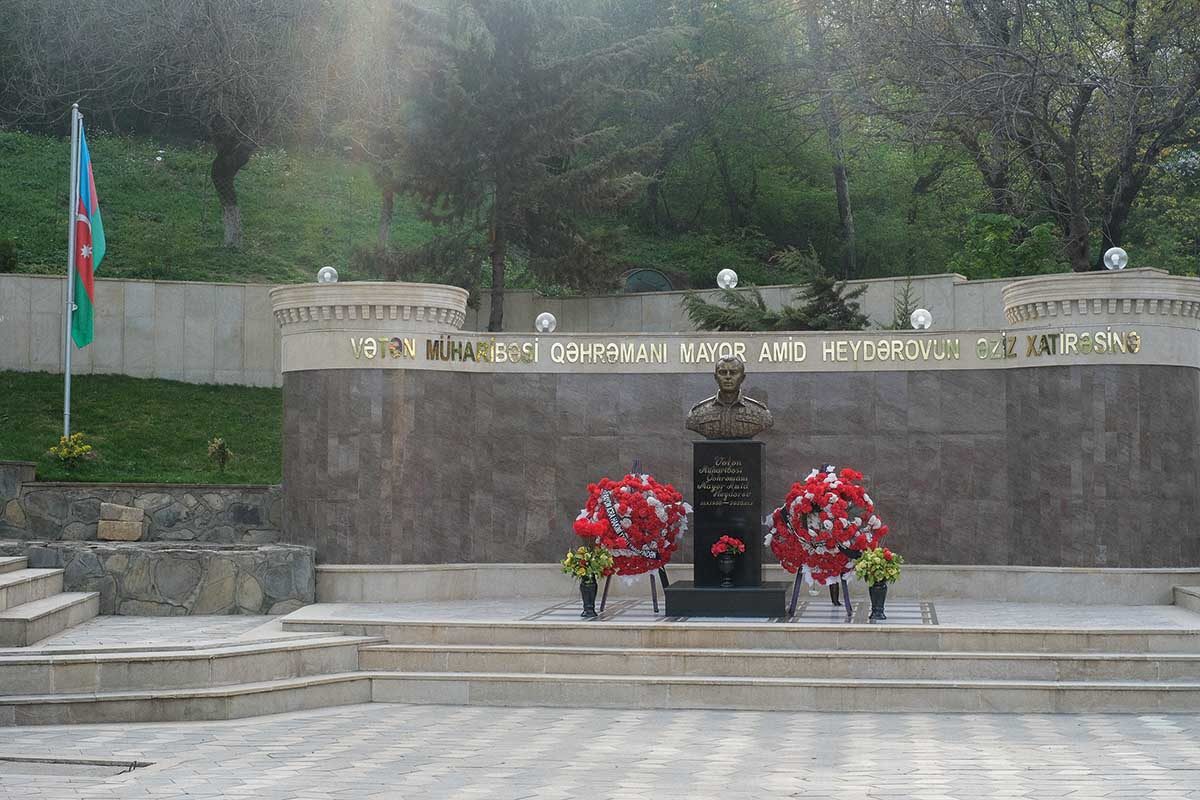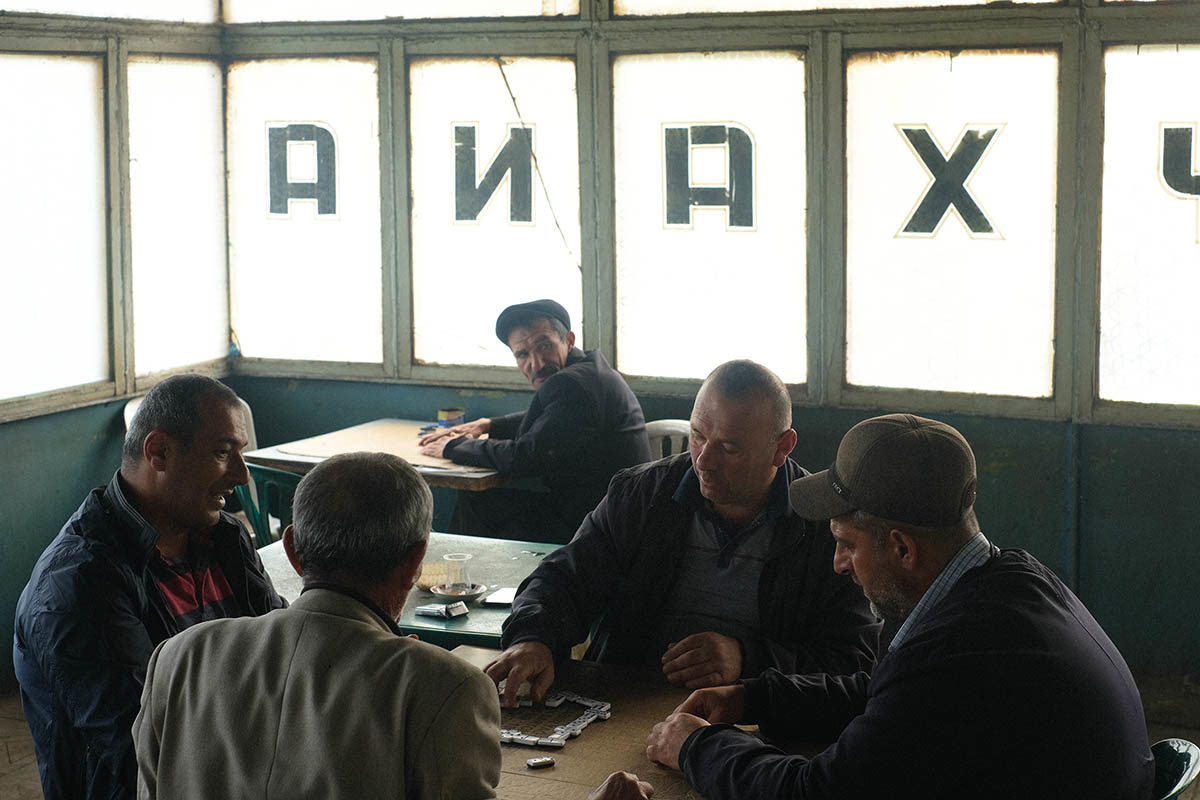
Intrigued by reports of extremely long-lived residents, J.R. Patterson travels to the tiny town of Lerik in Azerbaijan to see for himself what secrets it holds
Framed by a circlet of high, craggy mountains, the small hill town of Lerik in southern Azerbaijan sits 16 kilometres from the Iranian border and 64 from the Caspian Sea. The area is home to the Talysh people, an ethnic minority in both Azerbaijan and Iran. It’s also the heart of a region famed for its longevity. The people here live long lives – often living well past 100.
Shirali Muslumov, supposedly the oldest man to ever have lived, was born in a small village a few kilometres from Lerik. He died in 1973 – that much is certain. But Muslumov claimed to have been born in 1805, which would have made him 168, 52 years older than the world’s verified oldest man (Jiroemon Kimura, from Japan, who died in 2013, aged 116), and 46 years older than the oldest woman (Jeanne Calment, from France, who died in 1997, aged 122). During Muslumov’s youth, as he told it, the now extinct Caspian tiger was still relatively common in the Talysh mountains, as was kidnapping as a rite of courtship: Muslumov ‘stole’ his first wife in 1833, when he was 28 and she 12. ‘I rode into the next village on my horse and grabbed her. I was in the czar’s cavalry at the time. I loved her very much,’ he told photojournalist Calman Caspiyev in 1963. Caspiyev’s articles and photographs made Muslimov famous and helped to connect Lerik to the wider world. After their publication, a road was built to the town, followed by electricity, television and radio.
The Lerik of today resembles many other Azerbaijani towns. In a large central square with a small, well-tended garden free of rubbish, a crew of policemen loiter beneath a statue of Heydar Aliyev, Azerbaijan’s third president. A group of men in black leather jackets and newsboy caps stand waiting beside their Ladas for fares, mostly to cover the 48 kilometres down to Lankaran, the nearest city of any size, at the Caspian seaside.

Bordering the square are two long boulevards against which rise great blocks of austere government offices. These monuments to pencil-pushing authority seem silly and ineffectual standing against the backdrop of snow-coated mountains and sloping green leas. The occasional cow wanders down from its mountain pasture and into their forecourt. Those cows are organic leakage, evidence that away from its hard, marbled centre, the shellac-like veneer of the town coarsens and greens. On streets that narrow as asphalt turns to gravel and then to mud, the tidiness of the square is lost to the clutter of litter and crumbling houses.
These rough edges may be why Lerik isn’t officially recognised as one of the areas in which long life is endemic – the so-called ‘Blue Zones’, such as Sardinia, Italy; Okinawa, Japan; and Loma Linda, California. Yet the Caucasus region is well known for its pockets of longevity. The villages of Khinalig in Azerbaijan, Gadari in Dagestan and Kutol in Abkhazia have all been noted for their long-livers. And all of these locations share traits with those Blue Zones: plenty of exercise, good familial connection and a vegetable-heavy diet.

In 1973, Harvard physician Alexander Leaf visited Lerik on assignment for National Geographic. He was searching for the secret to long life and had read Caspiyev’s profile of Muslumov. He arrived too late to meet the man himself but found plenty of others whose age was seemingly extraordinary. One 117-year-old farmer, who still worked in the fields, told Leaf that the secret to his long life was ‘active physical work’. A 108-year-old shepherd said he took long walks, that he ‘had no worries’ and ‘never had a single enemy’.
What enables someone to live a long, healthy life has kept researchers busy for generations. There’s no straight answer. Genetics: yes. Exercise: possibly. An underactive thyroid: maybe. Luck: certainly. In respect to the age-outliers of Lerik, isolation may have had something to do with it – the quiet, the clean air, the tight community that was wholly self-reliant. The area has always offered a wealth of healthy food: fruits and nuts; fresh herbs; meat, cheese and yogurt from cows and sheep that nibble on the surrounding hillsides. But from the 1970s onward, a connection with the outside brought in modern tastes.
Today, although the pavements outside Lerik’s shop are still crowded with boxes of mandarins, pomegranates and apples, the interiors are mostly given over to a panoply of vodka and sugary treats: chocolate bars and boiled sweets that come as an accompaniment to the sweet tea served up at any opportunity. On his leaner diet, Muslumov and his aged shepherd kin tramped up and down the surrounding mountains, guiding their flocks from pasture to pasture and getting plenty of fresh air and exercise. While there remain plenty of shepherds in Lerik today, they are fewer, the youth drawn, like many across Azerbaijan, to the modern jobs of Baku.

Routine, too, seems to be key when it comes to enjoying a long life, whether it regards virtue or vice. Those who credit long life to smoking or drinking rarely fail to mention the dogged regularity (and moderateness) of their indulgences. Muslumov’s particular vice seemed to have been lust and he was dogged in its pursuit. He reportedly fathered a son at 80, with his second, 36-year-old wife. Local rumour has it that during Muslumov’s 150th-birthday celebration, a Russian colonel arrived at the party with his young wife. When the moment for presents arrived, Muslumov reportedly cried out, ‘I don’t want anything. Just give me that pretty woman!’ During his lifetime, his supposed 330 descendants extended into the fifth generation.
To celebrate these marvels of long life, Lerik has a Museum of Longevity, a little V-shaped brick building tucked away down a blind alley near the central square. The museum was closed when I arrived, so I went to the next best place to find the elderly: the cemetery. The area was a mash of untidy rows, tombstones old and new mixed seemingly at random, some with crumbling granite and dates worn to invisibility, others smooth marble with florid etching. Nobody there had died particularly old, mostly in their 50s, 60s and 70s. One woman, born in 1914, had died in 2019, just two weeks shy of her 105th birthday – impressive, but not the extraordinary age for which Lerik is known. As I came back into town, someone had set fire to a roadside rubbish tip. The tang of burning plastic hit my nostrils as a trail of acidic smoke settled over the town. It was yet another element that seemed incompatible with long life.
Upon my return, the museum was still locked, its dark interior illuminated by the glowing doorjamb of a lighted inner room. A knock summoned Elmur, the night watchman, who’d just arrived for his shift. He let me in, dug out a paper with details about the museum in English, then fell into step with me as I perused the two rooms. I had expected mustiness and spots of mould but the exhibits were well maintained and carried a feeling of regular, furious dusting. I later learned that the museum is a regular stop for travelling dignitaries – days before me, a delegation of Swedes, and, shortly after, the Japanese ambassador.

On the walls were intimate portraits of centenarians and supercentenarians, most of them taken by French photographer Frederic Lachop in 2000. The pictures hung over glass cases that contained ‘evidence’ of their ages alongside clippings from Azerbaijani newspapers. The majority were pictured holding some form of ID displaying their birth date, images that brought to mind the final weeks of Fidel Castro, who stubbornly continued to prove his existence by holding up that day’s paper.
In place of prominence was Muslumov, reigning champion at 168. Below his photo, in a glass case, were objects and papers from his life – his woolly papaq hat and a silk shirt and letter from Ho Chi Minh (‘Dear Grandpa’, it began). Elmur pointed to a piece of official-looking paperwork. ‘Passport’, he said. That word wasn’t actually evident on the document itself, but whatever it was, scrawled beside ‘year of birth’, the ink almost faded beyond legibility, was the number 1805. On another, dateless, yellowed newspaper clipping was an interview with Muslumov in which he claimed to have fought in the Crimean War.
Beside Muslumov was Mahmüd Eyvazov, aged 150 years, and Gizil Guliyeva, 120. Mahmüd’s brother, Ismayil, was there too, as well as Ismayil’s wife, Doaixanin Eyazova (if the two set any records for the longest marriage, there was no mention). In the middle of each room were collected items pertinent to the subjects’ lives: hand-operated sheep shears, old clothes irons, carpet-weaving paraphernalia, bowls of hazelnuts, various rusting hoes and pitchforks – the trappings of a difficult life of manual labour.
As the subjects approached the modern era, the museum – perhaps to pad the whole thing out – played looser with the term centenarian. Several displays were of people who died in their late 80s or early 90s. There were colour photographs of their families, group shots with smiling grandchildren and great-grandchildren – celebrations of loved ones, not the spectacle of a celebrity. There are still 157 centenarians (over-90s) living in Lerik today – 80 men and 77 women. Some of those living have even made it into the museum and beyond. A few days after my visit, exhibit subject Azizova Tamam Ali, from the nearby village of Rvarud, appeared on the Azeri television programme Traditional Bundle, thanking God for her 131 years.

Of course, Ali, like all the others, could be mistaken – or lying. Once the story of old age had lifted the town into international renown, it couldn’t be given up. The modern world, with its modern birth records, might have caught up to Lerik, but the myth remains intact. Even as its parameters have been lowered, and the bar for being super-aged got younger (a 90-year-old can now receive the same adulation as someone who’d once been assumed to be into their 15th decade), the respect for the myth only increased – suddenly there really were long-livers around every corner. It isn’t just age – that cognitive dissonance dividing belief and fact is present in other parts of Lerik life, too.
Thinking of the vodka stockpile in the local shop, I asked Elmur if any of the centenarians drank vodka as part of the secret to long life. He shook his head vehemently. ‘No. No. No Talysh drink vodka.’ This seemed like the pious talk reserved for strangers. In any case, I already knew it wasn’t true. Earlier that day, on my way to the graveyard, I’d been stopped by a tottering man in the streets. His clothes were dirty and ill-fitting, and he didn’t look like he’d live much beyond the day, let alone to 100. ‘Russki?’ he asked.
‘Canada,’ I said.
‘Canada!’ He thumped his chest. ‘Talysh,’ he said. In a pulse-taking gesture, he jabbed four fingers into his throat, the local sign for ‘Bottoms up!’
‘Napitok [Drink]?’ he added. ‘Vodka?’ It was two in the afternoon and I didn’t fancy seeing the day destroyed down a bottle. Perhaps that’s how Muslumov and the rest had felt. Although the English writer JB Priestley had rather the opposite thought, after meeting a supposed few of the local seniors while touring the area in 1945. In Russian Journey, he wrote that, ‘For my part I do not believe that the old chap was 150 or so, but… anybody who can digest that food and survive the terrifying local vodka…is tough enough to live almost for ever.’
The old, of course, are only one half of the story of longevity. Herein lies the luck element in aging. To have access to good air and food, and to take your walks, is one thing. To avoid a war is another. Lerik bestows an equal measure of honour upon those whose luck ran out. Dozens of 19- and 20-year-olds from Lerik died fighting in the 2020 Nagorno-Karabakh war, during which combatants from Azerbaijan on one side (with support from Turkey and foreign mercenary groups) and the self-proclaimed Republic of Artsakh and Armenia on the other, clashed over the long-disputed piece of land. Official government figures claim almost 3,000 Azerbaijani casualties in the six-week conflict; other sources go as high as 7,000.
At the graveyard, it’s easy to find their tombstones, similar to others I’ve seen throughout the country: black marble etched with likenesses of the dead’s fresh young faces and adorned with flags and wreaths. Additional memorials are often placed outside the homes of the deceased. Large and blocky, the graves give Lerik, as they do many other small towns across Azerbaijan, the feel of an open-air mausoleum.

As often as not, these graves are adorned with wreaths and rectangles of ersatz flowers coloured red, green and blue (the national colours of Azerbaijan), whose plastic immortality belies the human frailty buried beneath. Despite all signs to the contrary, these flowers seem to me not so much a sign of undying affection as the final proof that honouring the beauty of life can never be properly visited upon the dead.
A soft breeze picks up and as the fake roses stand stiffly, their unflagging posture and unfading colour only reminds me of the permanence of death and the extent to which we’ll go to justify its untimely occurrence.
The museum has its own memorial to these youths, cradling them within a tribute to health and long life. A pictorial display shows the portraits of those lost local boys, as well as those from a generation before, killed in the first Karabakh war of 1988–93. ‘These are our martyrs,’ Elmur says.
Just as the old and alive are a mythological tradition, so too are the young and dead. After spending an hour looking at pictures of gnarled, wizened shepherds, the faces of the three dozen young men look too smooth – waxy, unreal. The Museum of Longevity celebrates both the stayed-too-long and the gone-too-soon, the clash of a harmless fairytale with the painful truth.
When I finished at the museum, Elmur invited me to sit with him. I happily accepted, and we together sat in a bare backroom, where he served me a coffee so sweet it probably took a year off my life. He laid out a spread of sweets and sugar cubes, popping one after another into his mouth, crunching them with his shining gold teeth. I told him about my grandmother, who lived to 105, and asked if he had any relatives in the museum. He shook his head; his grandmother died at 80, but his grandfather had died young. I told him that, if possible, I would come back in 100 years, and look for his photo. He shrugged. He’s more concerned about his four sons. ‘With no war,’ he said, ‘they live a long time.




